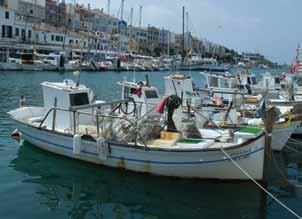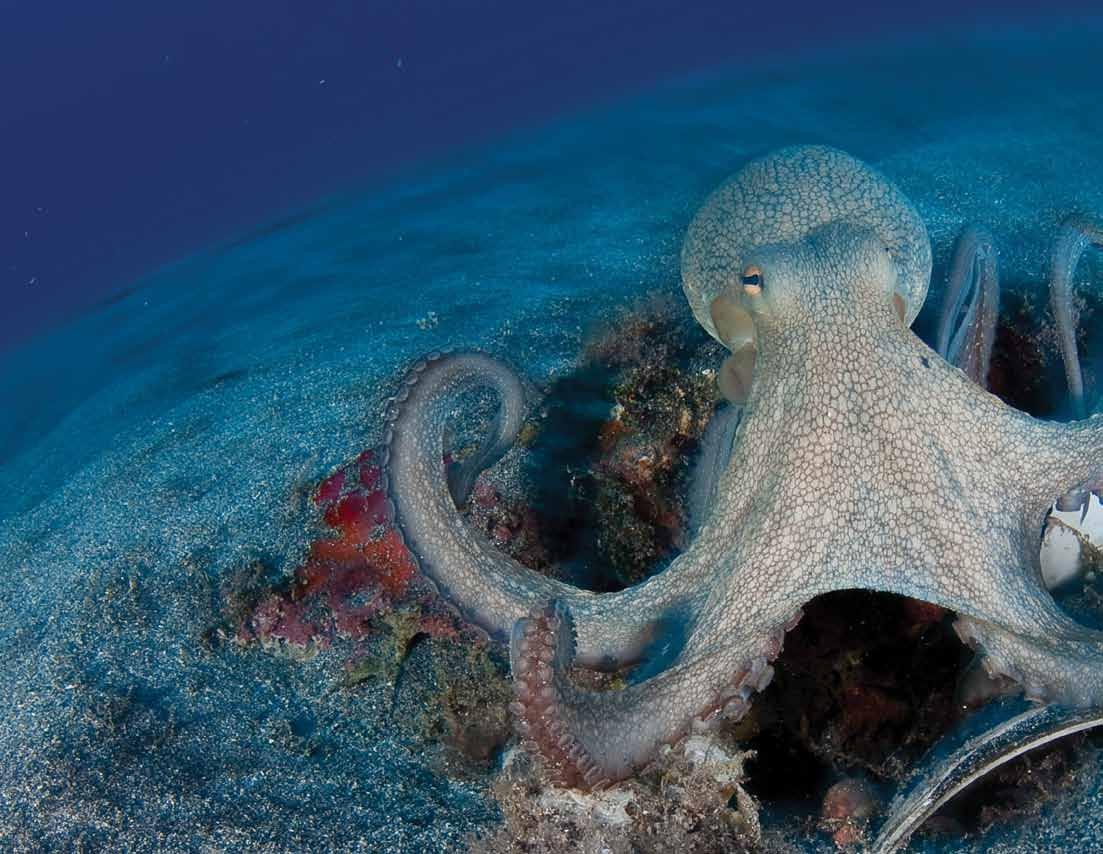
5 minute read
Oceana Approach
OCEANS ON THE BRINK
The oceans are vast, but they are not immune to human influence. We have already altered or destroyed many marine ecosystems and driven many species to the edge of extinction. According to a study published in Science, less than four percent of the oceans remain unaffected by human activity.


© OCEANA | Keith Ellenbogen

WE ARE TAKING TOO MANY FISH OUT OF THE WATER
In the last few decades, commercial fishing has evolved into a high-tech, heavily subsidized industry that uses cutting-edge electronics, computer systems, huge amounts of fuel and miles of gear to find and catch more fish in remote places formerly out of bounds to fishermen.
According to research by Dr. Daniel Pauly, a leading fisheries scientist and an Oceana board member, global seafood catch peaked in the late 1980s and has been declining ever since. The U.N. Food and Agricultural Organization says that 80 percent of seafood species are overexploited, fully exploited or recovering from depletion. At the same time, marine creatures like dolphins are at risk when they can’t find food to eat.
Destructive fishing practices that include diagonal-mesh driftnets, longlines with lethal hooks and bottom trawls are ruining ocean ecosystems by indiscriminately killing fish and other wildlife, including seabirds and marine mammals. Each year, more than 16 billion pounds of unwanted fish and other wildlife are thrown overboard. Bottom trawls drag heavily weighted nets along the ocean floor in search of fish or crustaceans in a practice akin to clearcutting a forest in order to catch a rabbit. Centuriesold habitats such as coral gardens are destroyed in an instant by bottom trawls, pulverized into barren plains. Meanwhile, offshore fish farming, rather than taking the pressure off wild seafood species, results in increased overfishing to feed the farmed fish as well as the despoiling of seafloor habitat. Tons of concentrated fish waste dropped from the open-water pens blankets the ocean bottom, snuffing out oxygen and life.
© OCEANA | Juan Cuetos
WE ARE ACIDIFYING AND WARMING THE OCEANS
Since the Industrial Revolution, the oceans have absorbed 30 percent of the carbon dioxide we put into the atmosphere, moderating and masking its global impact. Now, the oceans take in 11 billion metric tons of carbon dioxide per year, and the amount we release grows 3 percent annually.
Increasing levels of carbon dioxide in our oceans are making it difficult for coral reefs, phytoplankton and shellfish to form their shells. This includes many animals that are the base of the marine food chain and therefore critical to the oceans’ overall health. Coral reefs in particular, the nurseries of the seas and home to a quarter of all marine life, could be devastated by acidifying oceans.
This phenomenon, known as ocean acidification, hasn’t been seen at this level for at least 800,000 years. It poses a potentially catastrophic threat. In addition, oceans are warming because of global climate change. Shrinking ice caps give way to warmer ocean water in a vicious cycle of rising temperatures that has resulted in record low sea ice in the Arctic in recent summers. Warming oceans cause sea levels to rise, alter ocean circulation and disrupt entire ocean ecosystems.
© OCEANA | Carlos Suárez
WE ARE RISKING A CRITICAL SOURCE OF FOOD AND JOBS
A billion people rely on fish as their primary source of animal protein, and yet we are poisoning seafood with mercury, a toxic pollutant emitted by land-based industrial plants. According to a scientist with the U.S. Environmental Protection Agency (EPA), one in ten American women has enough mercury in her blood to pose a risk of neurological damage to her developing baby.
In addition, the livelihoods of close to 200 million people are tied to the oceans, from fishermen to beach lifeguards.
The oceans are an invaluable resource for humankind – one that we can’t afford to squander.
OPPOSITE PAGE: Sea fan in the Canary Islands. ABOVE LEFT: Tuna cage, Balearic Islands, Spain. MarViva Med Mediterranean expedition. CENTER: White gorgonia. Oceana Ranger Mediterranean expedition. RIGHT: Small artisanal fishing vessels in Menorca.
THE GOOD NEWS
SAVING THE OCEANS IS POSSIBLE IN OUR LIFETIMES.


Many of the most serious threats to the oceans can be addressed with solutions that already exist. New technology has made many kinds of pollution preventable; mercury-cell chlorine plants can eliminate mercury releases entirely by shifting to the newer membranecell technology. Gear modifications and changes in fishing behavior can allow commercial fishermen to avoid catching untargeted species; thousands of endangered sea turtles are saved each year when fishermen equip their nets with turtle excluder devices. Changes in fishing practices can protect coral gardens; restricting bottom trawling in areas of dense coral growth can preserve invaluable marine life without harming the fishing industry’s viability. Renewable energy like offshore wind power can reduce carbon dioxide emissions, as can requiring large cargo ships to reduce their speed by 10 percent and installing a moratorium on new offshore oil drilling.
THE ECONOMICS ARE WITH US
Unsustainable fishing is fueled by massive government handouts to the commercial fishing industry. The global fishing fleet is capable of catching many more fish than scientists think can sustainably be taken from the ocean. Scientists estimate that global fishing capacity may be as much as two and a half times the sustainable level. As a result, the global fish catch has declined since the late 1980s despite intensified efforts. The global fishing industry receives $20 billion in harmful government subsidies annually, a figure which represents close to one-fourth of the total dockside value of the global fish catch. Reckless, unsustainable industrial fishing does not make economic sense.
In the U.S. alone, recreational and commercial fisheries combined supply over 2 million jobs. On top of that, coastal tourism provides 28.3 million jobs and annually generates $54 billion in goods and services.
Ocean-based renewable energy such as offshore wind will generate economic growth. Over the next 20 years, offshore wind construction could represent $116 billion in economic activity in the United States alone, according to government data.
WE HAVE SUPPORTERS AND ALLIES
Oceana is not alone in this fight. We have 325,000 e-activists and supporters in over 150 countries. We are allied with conservation organizations and foundations, farsighted commercial and recreational fishermen, indigenous peoples, seafood consumers, scuba divers, sailors and ocean enthusiasts of all stripes. There is potential to build even more broad support for initiatives to protect and restore ocean ecosystems.







